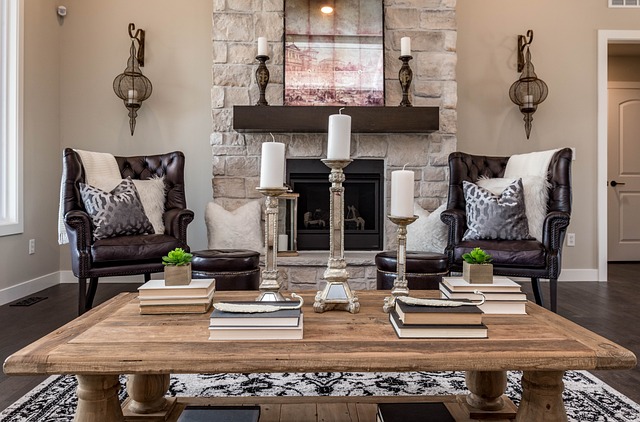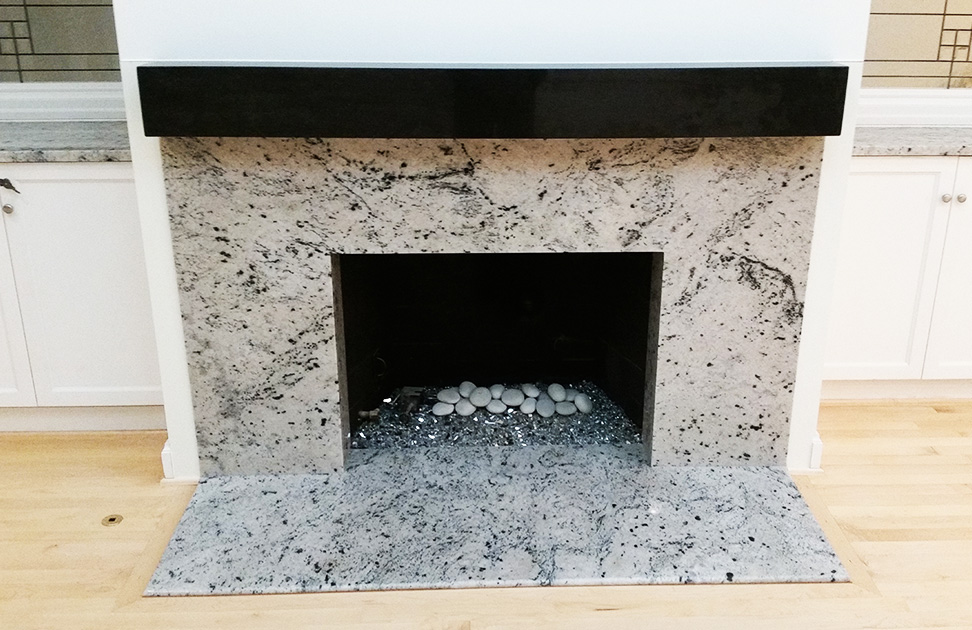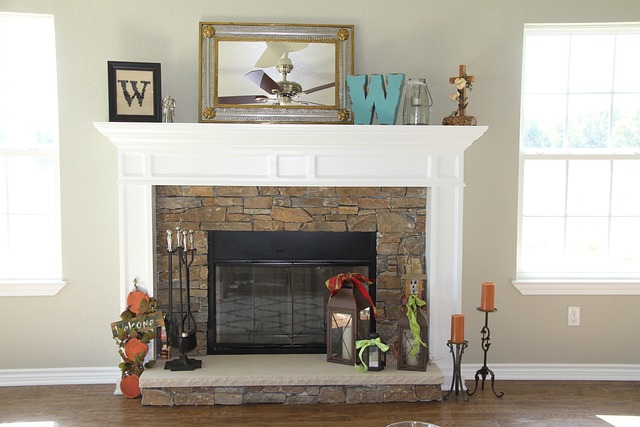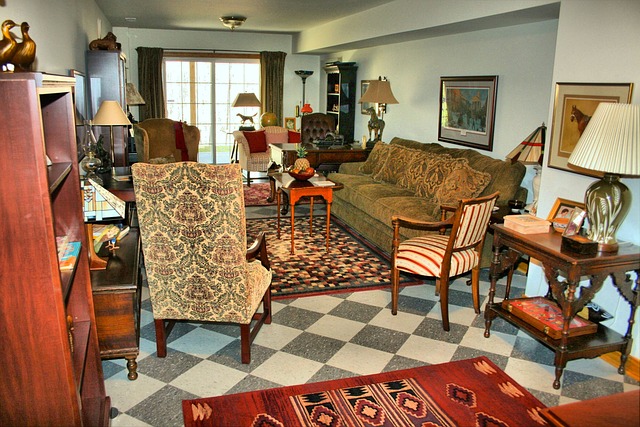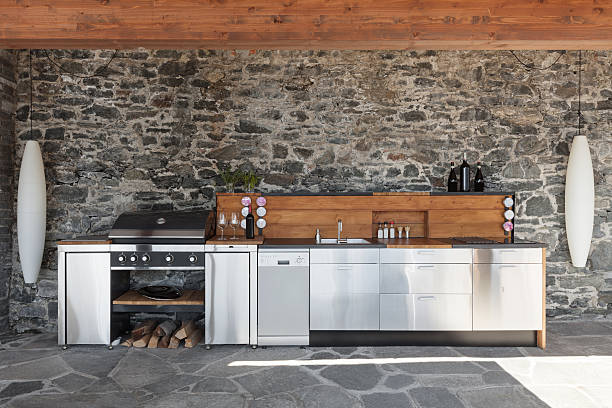Any material that is durable, fire-resistant, and doesn’t crack can be used for a hearth. The best hearth materials will match the decoration in your home and require little maintenance. This list includes stone, brick, concrete, and many more non-combustible materials.
With so many options, which materials are the best for making a safe and good-looking hearth? Are some materials, such as granite, safe for creating a hearth? How exactly do you make a hearth, and how thick does it need to be? Read on to find out!
What Materials Can Be Used for A Hearth?
Hearths can be made of any non-combustible material that will protect stray embers from lighting up your floor. They sit at the base of your fireplace and extend out into the floor to prevent accidental fires. The most common options for building hearths are:
- Granite
- Brick
- Tile (ceramic or porcelain)
- Marble
- Concrete
- Slate
- Stone (limestone or soapstone)
Hearths help to keep you and your home safe from the heat. They function as a barrier between the fire and floor for both fireplaces and wood stoves.
If your fireplace was directly on top of a wood floor or carpet, stray embers popping out of the fireplace could start an accidental fire. Your floors would also not be able to withstand the direct heat of a fire without a protective barrier.
Hearths also act as a decorative feature to match the aesthetic of your home. These often vary in size depending on the type and size of your fireplace. The material that you choose for your hearth will depend on your circumstances as they vary in durability, price, appearance, heat resistance, and upkeep.
For example, limestone is a popular choice for gas and electric fireplaces due to its low costs and variety of colors.
However, solid fuel fires (including wood-burning stoves) are not a good fit because limestone doesn’t heat evenly and will crack under higher heat. What about other materials, such as granite? Are they safe for hearths?
Is Granite Safe for Hearths?
Granite is safe to use for hearths because it will not crack and has a high heat resistance that can withstand all types of fires. Granite hearths support the fireplace and act as a shield to keep the floor from burning.
Granite is one of the most commonly used stones for hearths due to its durability and high heat resistance. It can easily withstand temperatures of up to 480 °F, likely even up to 1200 °F.
Granite’s hardness also means that it is scratch-resistant, which is great for homes with children and pets. This material is easy to clean and maintain when used in construction. Using a granite hearth allows your fireplace to stay in good condition for a long time with very little maintenance.
One downside of using granite for a hearth is that if it is laid in one slab it can chip over time. This is due to the fact that it expands and shrinks as it changes temperature next to a wood fire.
Any chipping reduces the effectiveness and safety of a hearth, as it creates a possible pathway for embers to reach the flammable material below. This problem can be solved by laying the granite down in separate slabs, preventing any cracking.
Now that we’ve talked about granite, what are the top three materials to use for hearths?
The Top Three Materials to Use for Hearths
1. Granite
As mentioned earlier, granite is a great mid-priced material for hearth construction. It has a range of patterns, textures, and colors to match your home. It can be left unpolished and more natural or polished for a refined look. Granite is strong and incombustible, which makes it a great choice to protect your home.
Unfortunately, the tendency to chip means that it needs to be placed in several slabs, which makes installation more tedious.
Luckily, once the hearth is installed, it needs minimal maintenance because it is a natural stone. Your granite hearth will stay scratch-free and easy to clean for as long as you have it.
2. Concrete
Concrete is a popular choice for hearths due to its adaptability and safety. Concrete is fireproof, durable, and resistant to rot or earthquake damage. These hearths are cheap and easy to make and can be formed into any shape imaginable. It is also low-maintenance because any spills can be cleaned up with water.
Concrete hearths are customizable in terms of shape, style, color, and finish. One of the downsides of concrete is that it isn’t the most attractive option by itself. However, it can be painted or covered with tile to match any decor. Finally, this material is relatively easy to patch up if any repairs need to be made.
3. Marble
Marble is another great choice for a hearth. It is highly heat-resistant and can be used with all types of fireplaces. Marble hearths are easy to clean, which is great for maintenance. In addition, marble hearths look good! Whatever color or style of marble you choose will add coziness and elegance to your home.
One downside to marble hearths is that it is more expensive in comparison to the other options on this list. Additionally, the porous surface means that any stains will show on the surface.
How Thick Does a Hearth Pad Need to Be?
In general, the interior hearth, within the fireplace, needs to be 4 inches thick. Hearth pad extensions require at least 2 inches of thickness. These values may vary depending on building codes in the specific residential area.
Your hearth pad will protect the combustible floor beneath and in front of a fireplace from sparks and embers. In addition, it prevents damage to the floor and helps to support grates and other items inside the fireplace. That’s why it’s so important to have an appropriately sized hearth that meets local regulations.
In general, the International Code Council suggests that any hearth extensions are at least 2 inches thick. One exception is if the bottom of your firebox is 8+ inches above the extension, which in that case can be as little as ⅜ of an inch thick.
Now that you have explored the different possibilities for materials and requirements for hearth thickness, you may be curious how exactly a hearth is made. Read on to learn the basics about hearth construction!
How Do You Make a Hearth?
Making your own hearth is possible and often cheaper than hiring a professional. However, you want to be sure to check building codes to make sure your hearth is constructed safely to protect your home.
In some locations, this requires an application for a license or a professional examination to prove the safety of your hearth. If you are interested in what goes into making your own hearth to see if it’s feasible for you, these are the basic steps:
- Prep the hearth floor
- Remove the tile or trim in front of the fireplace
- Level if uneven
- Remove any dust and debris
- Build a support platform out of plywood, fiberboard, or wood
- Add cement board of at least 2-inch thickness
- Cut pieces of surface material to the correct size (tile, slate, etc.)
- Cover cement hearth with previously cut pieces to fit the decor of your home
- Add finishing touches such as grout, paint, or sealant to protect from damage.
Source: https://fireplacetips.com/
Creating a hearth is a great way to protect your floors and add decoration to your home!
ABOUT US
Virginia Stone design specializes in custom fabrication and installation of natural stone.
- Kitckens outdoor Kitchens
- Bathrooms | Wet Bars
- BBQ grills
- Fireplace hearths
- Backsplash
- Sinks
Have a Project in mind? Just send us your design and specifications by e-mail or click below to get a quote and talk with us.


